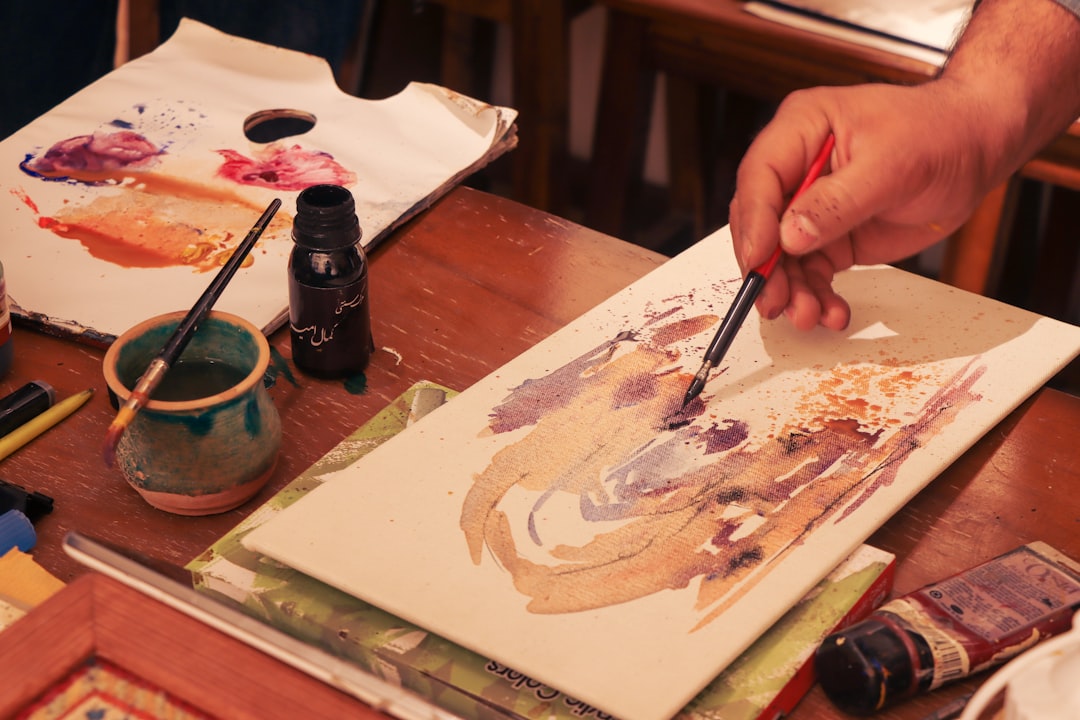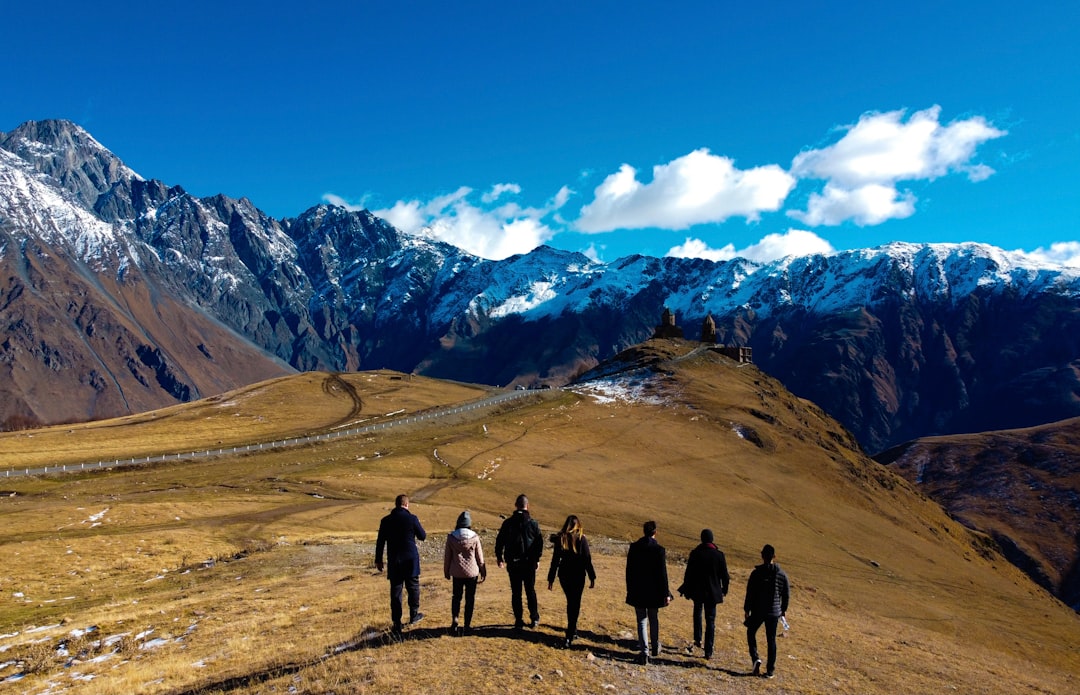Why travellers cartoon their profile pictures
Why travellers cartoon their profile pictures - Exploring digital representation on travel platforms
Delving into how travelers navigate their online presence on digital platforms reveals a fascinating evolution in self-expression. The trend of some individuals choosing to use cartoon versions of their profile pictures is one manifestation of wider currents in online identity formation, particularly significant in the context of pervasive travel photography and the culture of taking selfies for social media sharing. Beyond simple aesthetic preference, these stylized images can be seen as a counterpoint, or at least an alternative, to the often highly curated and sometimes repetitive visual narratives common in travel feeds, particularly those influenced by influencer culture aiming for aspirational perfection. Embracing a less conventional, perhaps more playful or private, digital self portrait offers a different way to connect and be perceived. This exploration of how identities are digitally represented is vital, as the collective sum of these individual presentations – whether realistic photos, filtered selfies, or cartoon avatars – contributes significantly to the online landscape of travel, influencing perceptions, shaping trends, and ultimately impacting how places are understood and desired by potential visitors.
Here are some observations regarding the nature of digital representation on travel-oriented platforms:
* Empirical observations rooted in cognitive processing research suggest that users often form initial assessments, including impressions of trustworthiness or reliability concerning a profile, based heavily on the profile image within the initial fractions of a second upon encountering it online.
* The extensive reservoirs of both structured profile details and unstructured data gleaned from user activity and representation on travel platforms are foundational elements used to train sophisticated computational models. These models drive personalization features and sometimes demonstrate a capability to anticipate future travel preferences or behaviours with a notable degree of precision.
* Analysis of user behaviour on these platforms presents evidence suggesting a nuanced dynamic: profiles perceived as slightly less 'perfect' or overtly curated can, in some instances, lead to increased perceived trustworthiness among the audience compared to those that appear unrealistically polished or idealised.
* Investigations into the social dynamics within online travel communities indicate that the deliberate choice to employ non-photographic avatars, such as cartoon-like representations, can subtly reshape interaction patterns, potentially enabling more unrestrained self-expression or shifting the focus of engagement away from physical likeness.
* From a neurobiological perspective, our cognitive architecture possesses evolved systems specifically attuned to processing facial cues and complex social signals. Online platforms, through various forms of visual representation including non-photographic avatars, appear to engage these inherent biological mechanisms, allowing digital artifacts to tap into our fundamental capacity for social interpretation.
Why travellers cartoon their profile pictures - Translating travel memories into a different visual style
Stemming from the creative energies often ignited by journeys, a parallel trend is observed where travellers are choosing to transform their travel recollections into alternative visual formats. This goes beyond simply displaying standard images, instead focusing on translating memories and feelings into distinctive graphic styles, which might include illustrations or even cartoon-like interpretations. This artistic pursuit serves as a different pathway to capturing the essence of a trip, providing a fresh perspective compared to the overwhelming quantity of predictable photo feeds common on social platforms. By moving away from straightforward photographic portrayal towards a more subjective rendering, individuals can aim to communicate personal narratives or emotional nuances that don't always surface in typical holiday photos or the often-optimised pictures found in certain online circles. Utilising these varied visual languages allows for a more individualised expression and can provide viewers with a potentially more authentic look into the journey than just a collection of literal snapshots.
Shifting the visual representation of travel experiences into different styles brings forward certain dynamics worth observing:
The mental workload involved in converting a rich, detailed travel scene captured in an image into a simplified or stylized graphic form, like a character avatar, might paradoxically serve to reinforce the underlying cognitive trace associated with that particular memory.
Preliminary observations from functional neuroimaging research hint that the processing of stylized or abstracted visual content, such as cartoon avatars derived from travel photographs, could potentially activate neural regions involved in emotional valuation or processing in ways subtly distinct from the direct analysis of purely photorealistic depictions.
Unlike the cognitive demands placed on recollection when attempting to reconstruct fine visual particulars from a complex photograph, engaging with a streamlined, stylized stand-in for a travel memory might influence the overall mental effort required for retrieving information about that specific occurrence.
Beyond its function as a mere external digital presentation, the deliberate action and intention embedded in crafting a personalized, stylized avatar based on a travel photograph—perhaps a selfie—may play a role in anchoring or subtly shaping aspects of the traveler's self-concept specifically tied to the memory of that journey.
Growing collections of user-generated stylized avatars linked to travel context, alongside associated behavioral data, are proving increasingly valuable as datasets in computational vision research. This data is being utilized to advance algorithms in abstract pattern recognition and to develop more refined systems for personalized visual synthesis.
Why travellers cartoon their profile pictures - Navigating privacy while sharing travel experiences online
In today's hyper-connected world, sharing travel stories online is commonplace, yet it constantly brings up the challenge of managing personal privacy. Many navigating these digital spaces find themselves caught between the understandable wish to share memorable journeys and a necessary vigilance regarding personal security. This tightrope walk is especially visible in the choices travellers make about presenting themselves visually online. Opting for less conventional self-portraits, including stylized or non-photographic avatars, can function as a conscious tactic to maintain some distance and control, offering a layer of protection for personal details while still enabling participation in the community of online travellers. While the appeal of sharing picturesque moments and experiences is strong, being mindful of how and what is shared is key, employing practical steps like thinking twice about revealing real-time location or carefully selecting who is part of one's online network. Striking a thoughtful equilibrium between documenting one's travels and safeguarding personal information remains a fundamental aspect of engaging with the digital travel landscape.
Investigations into autonomous systems processing travel-related visual uploads demonstrate their capacity, leveraging minute environmental data and object recognition, to correlate shared images with underlying personal traits – beyond basic location or time stamps – potentially revealing habitual activities or social graphs through incidental background details. This capability progresses beyond simple image cataloging.
The observed psychological effect of prospective digital dissemination of travel moments is quantifiable; constant internal negotiation regarding presentation for an imagined online audience can demonstrably redirect cognitive resources away from direct experiential engagement towards a form of performance, subtly altering the authentic encounter with a place.
Analysis of data lifecycle on numerous online platforms reveals that user-initiated removal commands for travel-related content frequently do not equate to permanent erasure; cached copies, system backups, or prior dissemination to downstream data aggregators mean a digital trace of past journeys, including precise temporal and spatial markers embedded in metadata, may persist and be accessible outside the original sharing context for extensive periods.
By mid-2025, advancements in neural network training on vast global image datasets have endowed vision models with an unexpected geo-inferencing precision; these systems can frequently pinpoint the geographical origin of a photograph to a highly localized area, sometimes even identifying specific structures or micro-locations, relying solely on intricate visual patterns within the image itself, irrespective of explicit geotagging data.
Computational models trained on historical trajectories and shared activity patterns, particularly derived from travel chronicles, exhibit a growing capability to extrapolate potential future movements and destination choices for individuals with a predictive accuracy exceeding random chance. This suggests shared past experiences contribute significantly to probabilistic profiling of future mobility.
Why travellers cartoon their profile pictures - Examining profile picture choices on social media
Examining profile picture choices on social media reveals how individuals navigate their online presence. In the realm of sharing travel experiences, the image users select serves as a primary visual identifier and significantly shapes how they are perceived. This decision, whether opting for a conventional photo, a carefully composed selfie, or a stylized cartoon avatar, goes beyond simple aesthetics. Research indicates that these visual representations can subtly influence how others feel connected to or identify with a profile, suggesting different styles might evoke varying levels of empathy. The choice also offers clues about aspects of the user's personality, with some studies finding links between certain traits and photo preferences. Consequently, for travelers online, the selection of a profile picture becomes an active process of crafting a digital persona, intended to communicate not just appearance, but perhaps also temperament or the desired nature of online interaction. This visual curation highlights the complex interplay between self-expression and how one wants to be encountered in shared digital travel spaces.
Here are some observations stemming from the examination of profile picture choices on social media platforms as of mid-2025:
Analyses employing sophisticated visual recognition algorithms indicate a capacity to infer characteristics extending beyond obvious physical attributes from profile images alone. This includes estimations of attributes like rough age cohorts or aspects of lifestyle, often with notable accuracy, seemingly by discerning subtle patterns not overtly declared by the user within the profile itself.
Furthermore, emergent automated systems are now observed performing analyses on collections of user photographs to propose or even synthesize alternative profile images. The purported objective? To statistically optimize perceived qualities like trustworthiness or engagement metrics, a process seemingly reliant on correlations identified within extensive corpuses of user image and interaction data. This introduces an interesting layer of algorithmic nudging in self-representation.
Insights drawn from investigations into neurocognitive responses to digital images suggest that nuances in visual presentation, such as the precise direction of a subject's gaze relative to the viewer or even subtle fluctuations in pupil size within a photographic profile representation, might subconsciously modulate how an online observer assesses perceived sincerity or emotional disposition during virtual encounters.
Social psychology studies focused on online contexts propose that the mere compositional decision—displaying a solitary figure versus inclusion within a group in a profile image taken during a journey—can exert a statistically significant influence on how viewers subsequently characterize the traveler's independence, their perceived social integration, or even the perceived character of the travel undertaking itself.
Finally, platform-level algorithmic analysis reveals a demonstrable correlation between the periodicity of profile picture updates, particularly in temporal proximity to documented events like travel, and the subsequent dynamics of visibility and interaction levels experienced by that user's content within various network feeds. The systems appear sensitive to this specific user action.
More Posts from itraveledthere.io:
- →Upscaling Facebook Profile Pictures Achieving Perfect 11 Ratio Without Quality Loss in 2024
- →7 Ways Travel Photographers Use Background Removal Tools to Create Stunning Social Media Content in 2024
- →AI-Powered Logo Color Transformation Enhancing Brand Imagery in 2024
- →Decoding Dating Profile Pictures Travel AI And The Reality Gap
- →AI-Powered Blemish Removal A Comparative Analysis of 7 Leading Tools in 2024
- →7 Haunted Selfie Spots Where Travel Influencers Capture Spooky Halloween Vibes in 2024

